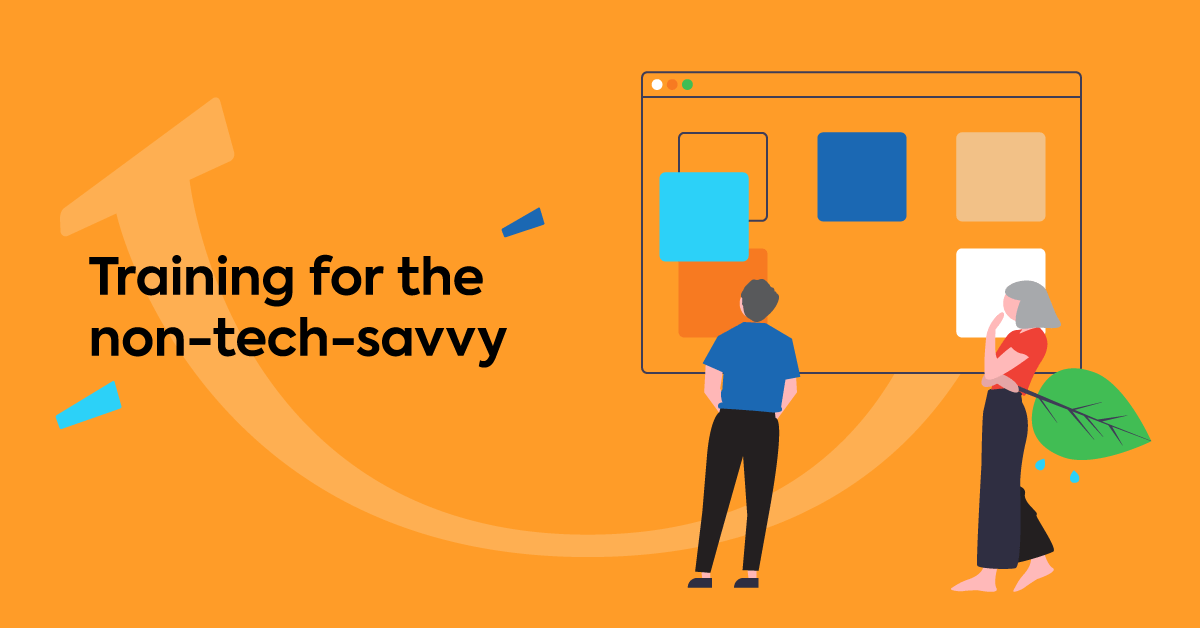Every company’s LMS needs are different, and there are limitless options out there to meet those needs. But what if you purchase your ideal training software for your organization, and then your needs change?
If your platform is suddenly not feeling like the right fit, it might be time to look at switching LMS platforms.
The right learning platform is crucial to your company’s growth. And while finding and implementing a new solution takes time, with a little planning, you can quickly transition to the best LMS for you.
Signs you need to consider switching LMS
With the right LMS, you can reach your organization’s learning and development objectives. So you shouldn’t feel locked into a system that’s not working anymore.
The benefits of switching LMS providers when needed outweigh the costs in time and effort it takes.
So how do you know if it’s time for you to make the leap?
When you start seeing signs a platform that formerly kept learning running smoothly is no longer handling everything as well as it once did.
Here are a few examples of the types of “growing pains” you may experience when your company outgrows its former solution:
- The pricing plan doesn’t scale to your needs. Your team is growing, and you need to upgrade to a bigger plan. But the next price tier with your current provider is double your training budget.
- Training doesn’t serve the learners. For instance, your people prefer to access work and learning on the go these days. But your current LMS doesn’t come with a native mobile app, so it’s difficult for employees to log in using their smartphones.
- The existing tech can’t support your growing team. Maybe the LMS for small businesses you invested in can’t keep up with your larger or more dispersed team. It struggles with slow performance and frequent crashes. Or it’s difficult to add new users or courses.
- You’re ready for more customized training. Your company wants to offer custom training, but creating online courses in your current LMS isn’t intuitive.
- Inadequate support. Your IT team has been managing an internally hosted LMS. But more complex training and a growing team are taking too much of their time. You may need to consider switching to a cloud-based SaaS LMS with included support.
If you’re seeing signs like these, it might be time to start reassessing your current LMS and consider an upgrade.

Switch to an LMS that meets your needs
Unlock a wealth of powerful features with TalentLMS.
The training platform that users consistently rank #1.
How to evaluate your current LMS
The first step in switching LMS is to thoroughly analyze your current system. You may have noticed it poses some major obstacles to your training. But that doesn’t mean they are the only gaps you’re experiencing.
To minimize the challenges of switching LMS platforms, start with a step-by-step review of the LMS you’re using now.
Step 1: Gather stakeholder feedback to identify pain points
Make sure you involve key decision-makers, administrators, instructors, and learners to ensure that the new LMS will meet all their needs.
Survey key stakeholders to gather their feedback on their experiences with the current LMS. Ask about usability, features, performance, and any pain points they’ve encountered.
Step 2: Review learning objectives and needs
Evaluate whether your current LMS aligns with your organization’s learning goals and objectives. Has your strategy changed since you first invested in it?
For instance, maybe as your workforce has grown, you’ve established a goal of preparing employees to take on new roles. Or you’re ready to start creating custom courses for specific company needs.
Also, take a look at how your working model has changed. Maybe trainers need a way to assess learning for a team dispersed across different time zones.
Look for any disconnects between your current LMS’s capabilities and the evolving needs of those who use it most.
Step 3: Assess technical performance
Evaluate changes in the technical performance of the LMS to see where it could serve you better.
For example, is it experiencing slowdowns, crashes, or other issues, especially during high usage periods? Maybe you need a provider with more server space. Or a system geared toward enterprise companies vs. small businesses.
Does it no longer connect to recently upgraded email or video conferencing software? Or is it incompatible with devices (e.g., screen readers) and browsers you need for accessibility? Perhaps you need a platform with more included integrations.
Step 4: Make a list of necessary features
Based on the first three steps, create a list of features you need from an LMS.
Say you need to support mobile learning (e.g., learning on smartphones) for a team that travels more.
Or you may want better tracking and reporting features to ensure a growing workforce is keeping up with compliance training.
Maybe your new goal of promoting from inside the company means you need to create custom learning plans for employees with specific career path goals.
Whatever your needs, make a list of the must-have functionality to have on hand as you review potential systems.

Researching a new LMS
Once you’ve assessed your current system, use the data to drive your research. Here are a few tips to keep in mind as you start looking:
Analyze the features
Make sure any system you evaluate has the LMS features that matter to you.
For instance, if you’ve determined that a mobile app is a must-have, eliminate any platforms that don’t include a native app.
If you know you’re struggling to get employees to complete training, look for features that engage learners. (Like easy user sign-on and navigation, gamification options, or personalized learning paths.)
Consider content management and delivery
Assess how easily you can upload, organize, and deliver different types of content (e.g., videos, documents, quizzes) through the LMS.
Meet TalentLibrary™
A growing collection of ready-made courses that cover the soft skills
your teams need for success at work![]()

Think about the user experience
Test the user interface and navigation from both learner and administrator perspectives. Evaluate whether people will be able to easily find, access, and navigate courses.
Examine reporting and analytics features
Check whether a system can track and assess learner progress, engagement, and performance effectively. This will help you evaluate the success of your training and of your new LMS.
Look at integrations and customization
Make sure the software can connect with other systems, such as HR software, CRM, or Single Sign-On (SSO) solutions.
Evaluate support and training
Make sure you understand the level and types of support the vendor offers. Are they responsive and helpful? Will users and administrators have the training resources and documentation to get up and running quickly and troubleshoot?
Compare costs
Last but not least, consider your budget. Look at costs, including licensing fees, maintenance, and support and ensure they fall within your spending capabilities.
How to choose a new LMS from your shortlist
Once you’ve narrowed down your choices to a few potential platforms, make your choice easy by looking at logistics. Consider what it will take to ensure switching LMS smoothly. For instance:
- Is there a process in place for importing data from your current software?
- Does the provider have an LMS migration checklist for easy transitions?
- How much time will it take to roll out the new software?
- Are there costs involved in setup or implementation?
- What’s the learning curve to get familiar with the interface?
If you’ve narrowed it down to multiple offerings with the same features and price point, these considerations can help you choose the best solution.
Upgrading your LMS
The trigger to switching LMS could be anything: maybe your current platform doesn’t meet an emerging business need. Maybe your vendor increased their prices or your budget became tighter. Maybe a new training manager wants to explore different options.
No matter the trigger, though, best practices for switching LMS solutions involve looking at the bigger picture and evaluating all possibilities
In some cases, you might end up deciding that with a few changes, you can keep your current LMS. But if it doesn’t meet your needs, or likely won’t for much longer, moving on now will save you time (and money) in the long run.
| Tags: LMS Implementation,LMS Integration

